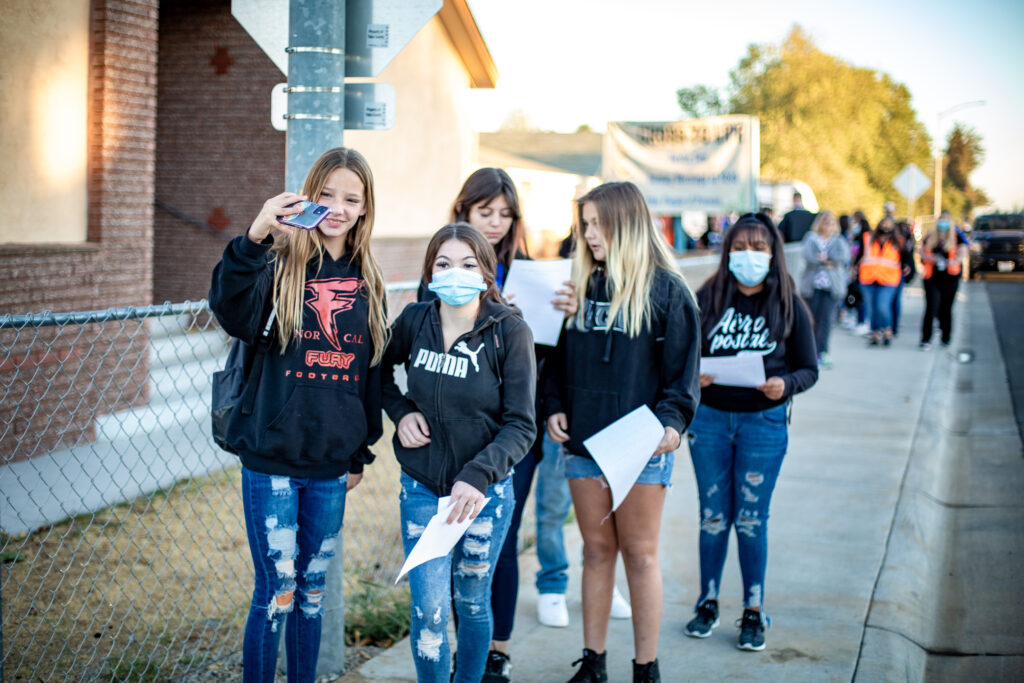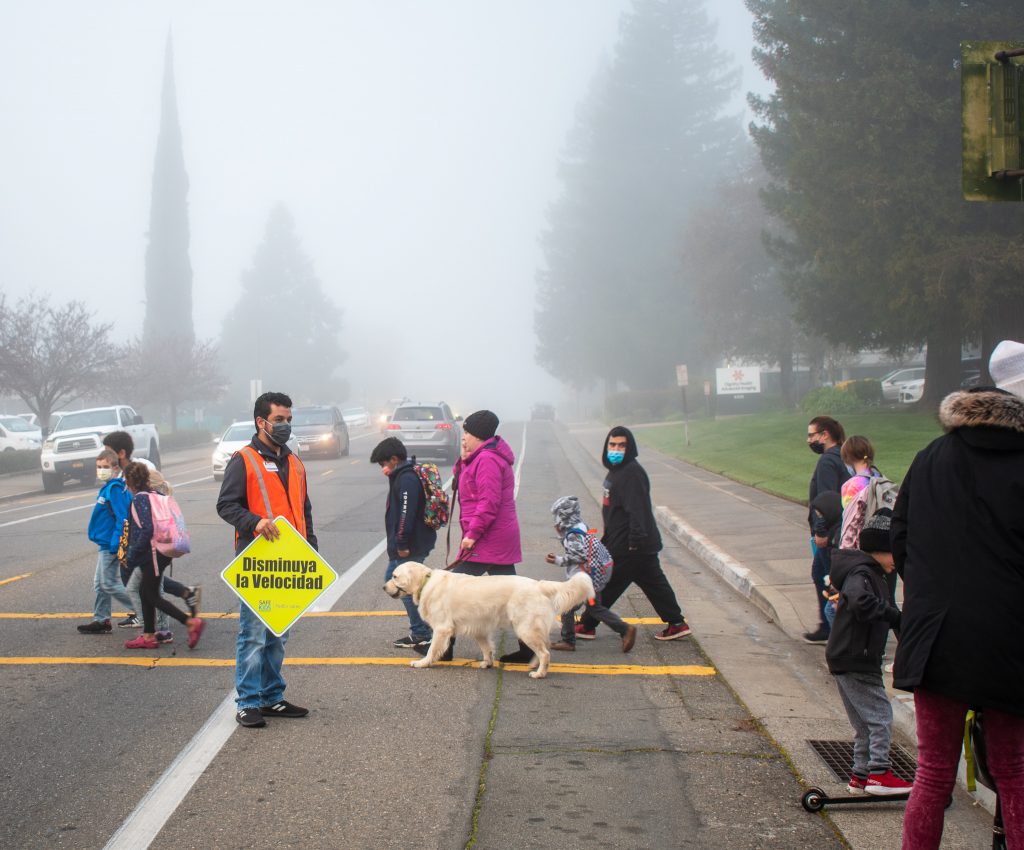Civic Theard works to implement Safe Routes to School programming at schools across the Sacramento Region as the leading Safe Routes to School expert. Our work has supported over 100 local schools across 7 counties and has secured $8,500,000 in infrastructure improvements, thanks to Safe Routes to School programming.
As Safe Routes to School facilitators, we provide comprehensive programming to k-12 schools, co-create Safe Routes to School master plans, and provide technical assistance to school districts, agency partners, and local jurisdictions.
Safe Routes to School is an internationally recognized program that provides safer routes for students to walk and bike to school. Research has shown that students who walk or bike to school get more daily physical activity, have lower rates of obesity, and improve their self-confidence and academic performance. The more students and families who can walk and bike to school safely results in less reliance on motor vehicles, safer neighborhoods, cleaner air, and greater transportation freedom. By creating safer, healthier, more sustainable communities, Safe Routes to School programs benefit individuals. They are critical to meeting our state, regional, and local health, air quality, and economic development goals. Safe Routes to School Programming has been successfully implemented across the U.S. and globally. Every Safe Routes to School program aims to meet the core goals or “6Es” of Safe Routes to School.
Equity
Equity concerns of safe, active, and healthy opportunities for children and adults in disadvantaged communities are integrated and addressed through the first 5Es to make SRTS programs safe, accessible, and successful.
Evaluation
Evaluation methods are critical to identifying the needs for establishing a Safe Routes to School program and long-term success.
Encouragement
Holding school-wide events helps provide motivation to establish long-term programs. Bike to School Day and Walk to School Day events support a broader initiative for community-wide support for SRTS.
Education
Multi-disciplinary programs are a key focus of SRTS. Kids are encouraged to walk and bike outside of school and learn valuable lessons and tactics in the classroom.
Engineering
Community assessments in road infrastructure around schools help identify needed improvements to support SRTS programs.
Engagement
Engaging parents, teachers, students, and neighbors in developing a community-specific program is the first step in launching a SRTS program. Engagement happens throughout each project phase to ensure community and student voices are prioritized.
Want to Bring SRTS to your Community?
We’re eager to partner with local government agencies, school districts, community residents, and youth to bring sustainable and holistic Safe Routes to School funding that supports Infrastructure and noninfrastructure programming for the entire Sacramento Region. Holler at us for partnership opportunities!

Safe Routes to School: Yuba County
Improving safety for students walking and biking to school in Yuba County

Safe Routes to School: San Juan Unified (ATP)
Serving 14 school sites and improving district-wide active transportation plans and policies

SAN JUAN TRANSPORTATION DEMAND MANAGEMENT
Empowering student and faculty mode shift at four participating schools in the Arden-Arcade area

Safe Routes to School: Sacramento County
Engaging parents and youth at schools throughout Sacramento County in health in the built environment

Safe Routes to School: West Sacramento
Expanded Safe Routes to School programming to charter, private, and high schools in West Sacramento

Safe Routes to School: Foothill Farms
Empowered students, families, and community partners to identify safety improvements following the death of a middle school student who was hit and killed by a vehicle